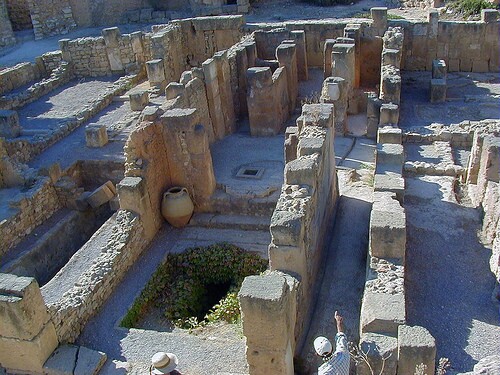
UNIVERSITY OF OTAGO—A research team co-led by a scientist at New Zealand’s University of Otago has sequenced the first complete mitochondrial genome of a 2500-year-old Phoenician dubbed the “Young Man of Byrsa” or “Ariche”.
The Phoenician’s remains were recovered previously by a team excavating at the site of Byrsa, the ancient citadel of Carthage in northern Africa, under the direction of Jean-Paul Morel. Upon examination, scientists determined the remains to be those of a young man between 19 and 24 years old with a robust physique and 1.7 (five feet six inches) meters tall. He was buried with gems, amulets, scarabs and other items that suggested he belonged to the elite class of the Carthaginian citizenry. Scientists have not determined the cause of his death.
Byrsa was considered the major military facility guarding the city of Carthage. It is known historically as the monumental city besieged by the Roman general Scipio Aemilianus ‘Africanus’ in the Third Punic War, eventually destroyed by the Romans in 146 BCE.
_________________________________________
Excavated remains of Byrsa. Pradigue, Wikimedia Commons
____________________________________________
Reconstruction of Ariche by Elisabeth Daynès. Credit: M. Rais, Wikimedia Commons.
________________________________________________________
This is the first ancient DNA to be obtained from Phoenician remains and the team’s analysis shows that the man belonged to a rare European haplogroup—a genetic group with a common ancestor—that likely links his maternal ancestry to locations somewhere on the North Mediterranean coast, most probably on the Iberian Peninsula.
The findings are newly published in the international journal PLOS ONE.
Study co-leader Professor Lisa Matisoo-Smith of the Department of Anatomy says the findings provide the earliest evidence of the European mitochondrial haplogroup ‘U5b2cl’ in North Africa and date its arrival to at least the late sixth century BC.
“U5b2cl is considered to be one of the most ancient haplogroups in Europe and is associated with hunter-gatherer populations there. It is remarkably rare in modern populations today, found in Europe at levels of less than one per cent. Interestingly, our analysis showed that Ariche’s mitochondrial genetic make-up most closely matches that of the sequence of a particular modern day individual from Portugal,” Professor Matisoo-Smith says.
While the Phoenicians are thought to have originated from the area that is now Lebanon, their influence expanded across the Mediterranean and west to the Iberian Peninsula where they established settlements and trading posts. The city of Carthage in Tunisia, North Africa, was established as a Phoenician port by colonists from Lebanon and became the center for later Phoenician (Punic) trade.
The researchers analysed the mitochondrial DNA of 47 modern Lebanese people and found none were of the U5b2cl lineage.
Previous research has found that U5b2cl was present in two ancient hunter-gatherers recovered from an archaeological site in north-western Spain, she says.
“While a wave of farming peoples from the Near East replaced these hunter-gatherers, some of their lineages may have persisted longer in the far south of the Iberian peninsula and on off-shore islands and were then transported to the melting pot of Carthage in North Africa via Phoenician and Punic trade networks.”
Professor Matisoo-Smith says Phoenician culture and trade had a significant impact on Western civilisation. For example, they introduced the first alphabetic writing system.
“However, we still know little about the Phoenicians themselves, except for the likely biased accounts by their Roman and Greek rivals—hopefully our findings and other continuing research will cast further light on the origins and impact of Phoenician peoples and their culture,” she says.
Source: Adapted and edited from a University of Otago subject news release.
_______________________________________________________

______________________________________________
Travel and learn with Far Horizons.
____________________________________________
This richly illustrated issue includes the following stories: Recent findings shedding new light on the whereabouts of the remains of Philip of Macedon, father of Alexander the Great; how an archaeologist-sculptor is bringing bones of the dead back to life; archaeologists uncovering town life at the dawn of civilization; an exclusive interview with internationally acclaimed archaeologist James M. Adovasio about what makes the Meadowcroft Rockshelter prominent in the ongoing search for the first Americans; what archaeologists are finding at the site of the ancient city of Gath, the home town of the biblical Philistine giant, Goliath; and how scientists are redrawing the picture of human evolution in Europe. Find it on Amazon.com.









